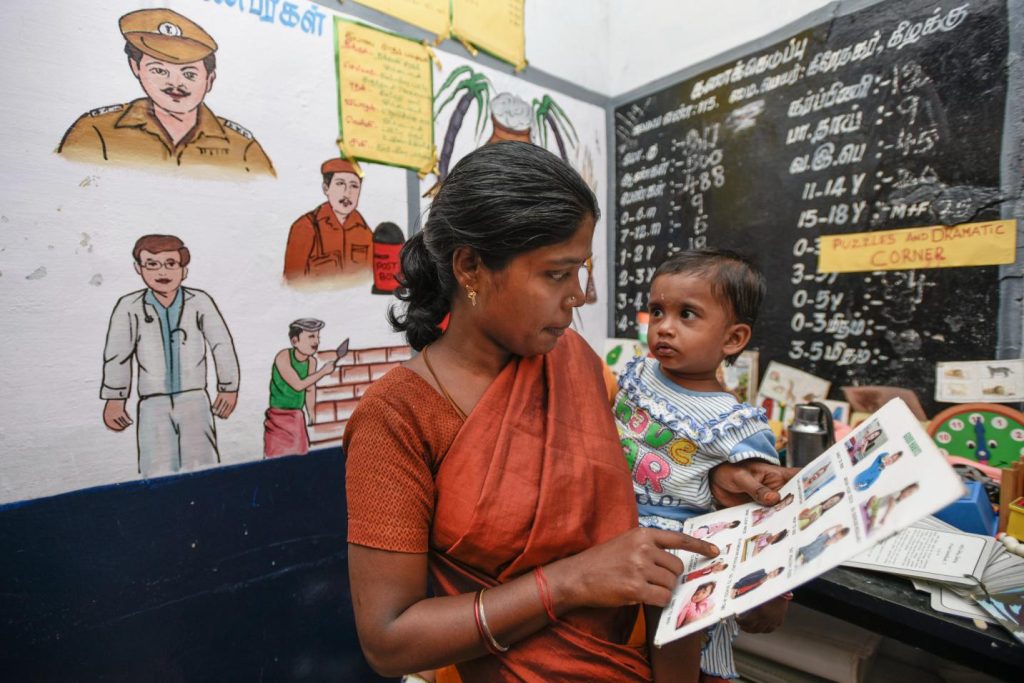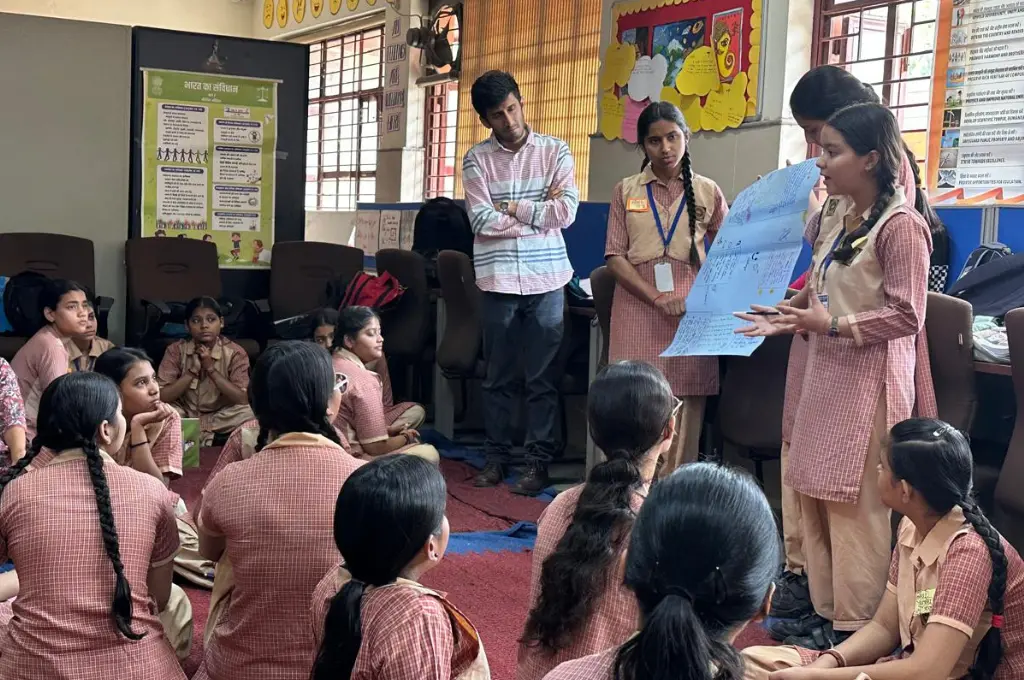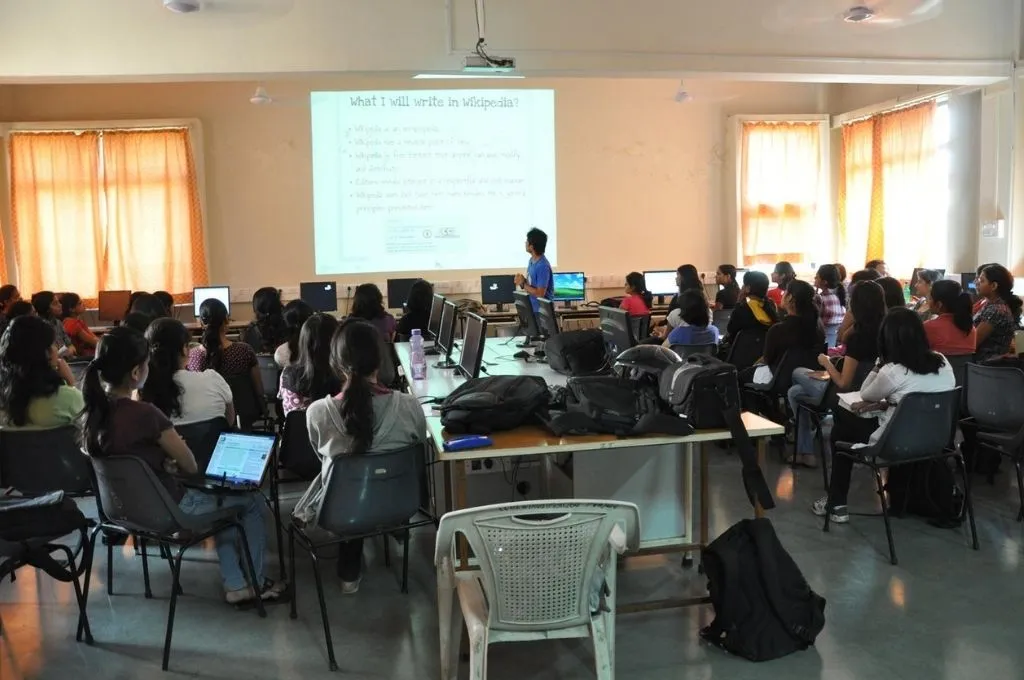According to the 2011 census, India is home to 99 million children between three and six years of age, a period considered vital for growth. Researchers believe that a child learns the most during this period of early childhood—from birth until the age of six or eight years. The foundations of brain architecture and functioning, and subsequently lifelong developmental potential, are laid during this time.
Cognisant of this fact, education policies in the country have time and again stated the need for equitable early childhood education (ECE). The National Education Policy 2020 has gone a step further and recommended the inclusion of young children within the structure of the school system and the universalisation of pre-primary education by 2030. However, a vision of such magnitude can only be brought to fruition with adequate resources and planning.
Early childhood education in India
Currently, the ECE system in India is a mix of incongruous programmes with different funding streams, service providers, and quality standards. Government is the largest provider of ECE, followed by the private sector, and nonprofits and other organisations that run preschools for a small proportion of children. The public sector delivers ECE through its network of anganwadi centres and preprimary schools across the country, but is able to cater to only 31.4 million children. According to the National Sample Survey 75th Round report, approximately 37 million children do not avail of any early education service, be it in the public or private sectors. Further, there are wide variations in access to quality ECE. For example, the annual average out-of-pocket expenditure per child varies from INR 1,030 in government institutions to as high as INR 12,834 in private institutions.
Poor allocation of public funds is one of the major roadblocks to effective planning and delivery of ECE in India. In 2020–21, the government allocated a meagre 0.1 percent of the GDP to ECE and its average yearly spend of INR 8,297 per child is drastically lower than the amount required to meet the standards set by countries around the world. Even within India, budget allocation varies across states. While Haryana allocated INR 16,506 per annum to each child in 2020–21, West Bengal’s allocation was only INR 5,346.
A model for the future
What kind of financial investment will it take to make sure that India has a robust ECE system? To answer this question, the Centre for Budget and Governance Accountability along with Save the Children India conducted a study to estimate the cost of universalising quality ECE. Based on primary and secondary research, the study proposes the adoption of the following three models—that are aligned with the National Education Policy 2020, widely prevalent, and scalable—to deliver ECE.
1. Stand-alone preschool-cum-day-care centres
This model is suitable for urban areas, especially for children with working parents. The centre operates for six to eight hours, aligned to parents’ work timings, and has three ECE teachers, one centre head, and two helpers. Sixty children aged three to six can be enrolled at these centres. The infrastructure and facilities in the centre include a computer and an internet connection, a kitchen, a toilet, drinking water, furniture, and adequate educational material for the children. The centre has a minimum area of 800 square feet in addition to an outdoor area for play.
2. Stand-alone anganwadi centre
This model meets all the quality parameters that apply to preschool-cum-day-care centres, and can be considered as an anganwadi centre of improved quality with two ECE teachers and one helper. It operates for three to four hours daily and can enrol 40 children in the three-to-six age group. The centre has a computer and an internet connection and/or smartphones, a kitchen, a toilet, drinking water, furniture, and adequate educational material for children. It has a minimum area of 500–600 square feet in addition to an outdoor area for play.
3. Pre-primary section in primary schools
This model is located within a primary school and is staffed with two ECE teachers and one helper. It can enrol 40 children in the three-to-six age group and operate for four hours. The infrastructure and facilities in the centre include a computer and an internet connection and/or smartphones, furniture, and adequate educational material for children. The toilet and drinking water facilities are shared with the primary school. The infrastructure such as the space and classrooms within an existing primary school are utilised by the pre-primary sections as well.

Cost of universal ECE
The study considers the following costs to deliver quality ECE:
- Establishment cost: This comprises the cost of infrastructure development, including investment on buildings/space acquisition, and procurement expenditure on fixed assets such as furniture, water tanks, computers, printers, and swings for playgrounds.
- Operational cost: This comprises cost of staff salaries, rent or maintenance of buildings and other infrastructure, communication expenses, midday meals, and so on.
- Institutional cost: This includes institution building at various levels of governance (block, district, state, and centre), monitoring and supervision, and so on. These allied expenditures were included because they apply to similar service provisions in various other government programmes such as anganwadi services and the Samagra Shiksha Abhiyan.
The study recommends a teacher–child ratio of 1:20 in all three models. It recognises that the salary of an ECE teacher should be at least INR 40,240 a month, so that it is equivalent to the amount currently paid to a primary school teacher at a Kendriya Vidyalaya. Further, the entry-level salary of a helper should be INR 8,892–11,622, in accordance with the minimum wage norms for unskilled labour set by the Union Ministry of Labour and Employment.
The study estimates the cost of universalising ECE in India in three scenarios, which involve providing quality ECE to:
- All 99 million children aged three to six
- The 67.6 million children who are currently not availing government ECE services
- The 37 million children who are currently not enrolled in any ECE service

Based on the authors’ calculations, the study concludes that the approximate total resource requirement to provide universal quality ECE services to all children in the three-to-six age group would be in the range of 1.5–2.2 percent of the GDP.
Mobilising revenue for universal ECE
The study has identified some channels from where additional resources can be mobilised towards the universalisation of ECE.
1. 15th Finance Commission
The 15th Finance Commission has recommended a 41 percent share for states in the central taxes for the period of FY2021–26. As this fund is flexible in nature, a part of it can be used for institution building for ECE. The commission also recommended a grant of INR 4,800 crore to incentivise states to enhance educational outcomes. The government could use this resource efficiently to improve early education services in the country.
2. Unutilised cesses
Over the last 10 years, cesses of approximately INR 1.25 lakh crore were collected on crude oil but remain in the Consolidated Fund of India as they were never transferred to the designated reserve fund. There have been similar incidents in the past where cesses, taxes, and charges have been collected but never remitted to specific reserve funds. The unutilised cess or part of it retained in the Consolidated Fund of India can be used to finance universal ECE.
3. Unspent funds from government programmes
At different points of time, Comptroller and Auditor General of India (CAG) audits have shown sanctioned amounts lying unspent under different government-run programmes. As mobility of funds under centrally sponsored schemes and central sector schemes is mostly conditional, it is difficult to utilise unspent funds from one sector/scheme on another. The government should make the programmes more flexible and channel unspent funds into deserving sectors such as early education.
4. Corporate social responsibility
Education receives one of the highest priorities in CSR activities but only 17 percent of these funds is directed towards education of pre-primary children. The CSR community must be made aware of the importance of ECE and the need to enhance its quality and coverage in the country.
Policy recommendations
In addition to suggestions on the need and utilisation of budget, the study makes certain policy recommendations:
1. Increase spending on anganwadi services
The early education programme run under anganwadi services is considered to be age appropriate. However, due to the shortage of anganwadi centres and low quality of service delivery, people have to resort to private centres that do not follow recommended practices. Therefore, it is vital for the state to enhance its spending on anganwadi services so that children between three to six years of age can avail good-quality early education.
2. Improve data collection
There is paucity of data on ECE interventions in the country, which hinders planning. Disaggregated, real-time physical and financial data is vital for adequate planning, budgeting, and monitoring of early education at all levels.
3. Maintain a well-trained and well-paid workforce
A professionally trained and adequately compensated workforce is needed to impart early education. Training and capacity-building programmes must be conducted for staff at ECE centres on a regular basis. The study recommends building a block- or cluster-level centre or strengthening existing architectures to regularise and professionalise the staff.
4. Standardise financial norms
The financial norms of certain essential components such as salaries of teachers, education material, and training must be standardised at the central level. States should have the flexibility to spend over and above the stipulated norm set by the Centre. Moreover, the unit costs of many components such as rent, infrastructure, and teaching and learning material should be increased.
5. Regulation of education services
Early education services need to be regulated across diverse service providers, along the lines of the quality standards set by the Ministry of Women and Child Development and the National Early Childhood Care and Education Policy. Norms such as space, teacher–child ratio, and curriculum mentioned in both could be key aspects in delivering effective ECE in India.
—
Know more
- Learn more about more about the gaps in the implementation of early childhood care and education in India.
- Read about why education programmes for low-income communities must engage with the sociocultural and political aspects of marginality.
- Learn about young children’s early childhood education trajectories in rural India.







